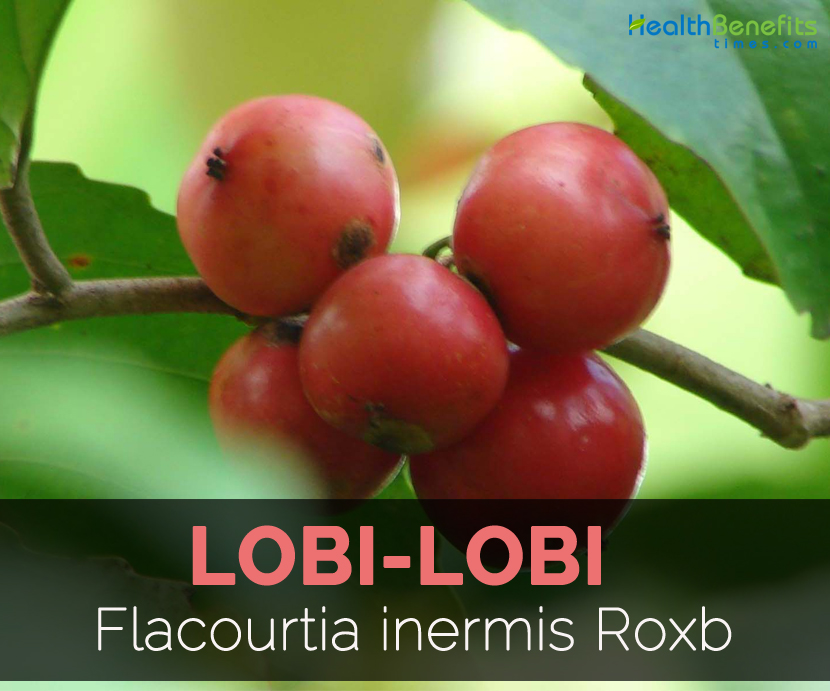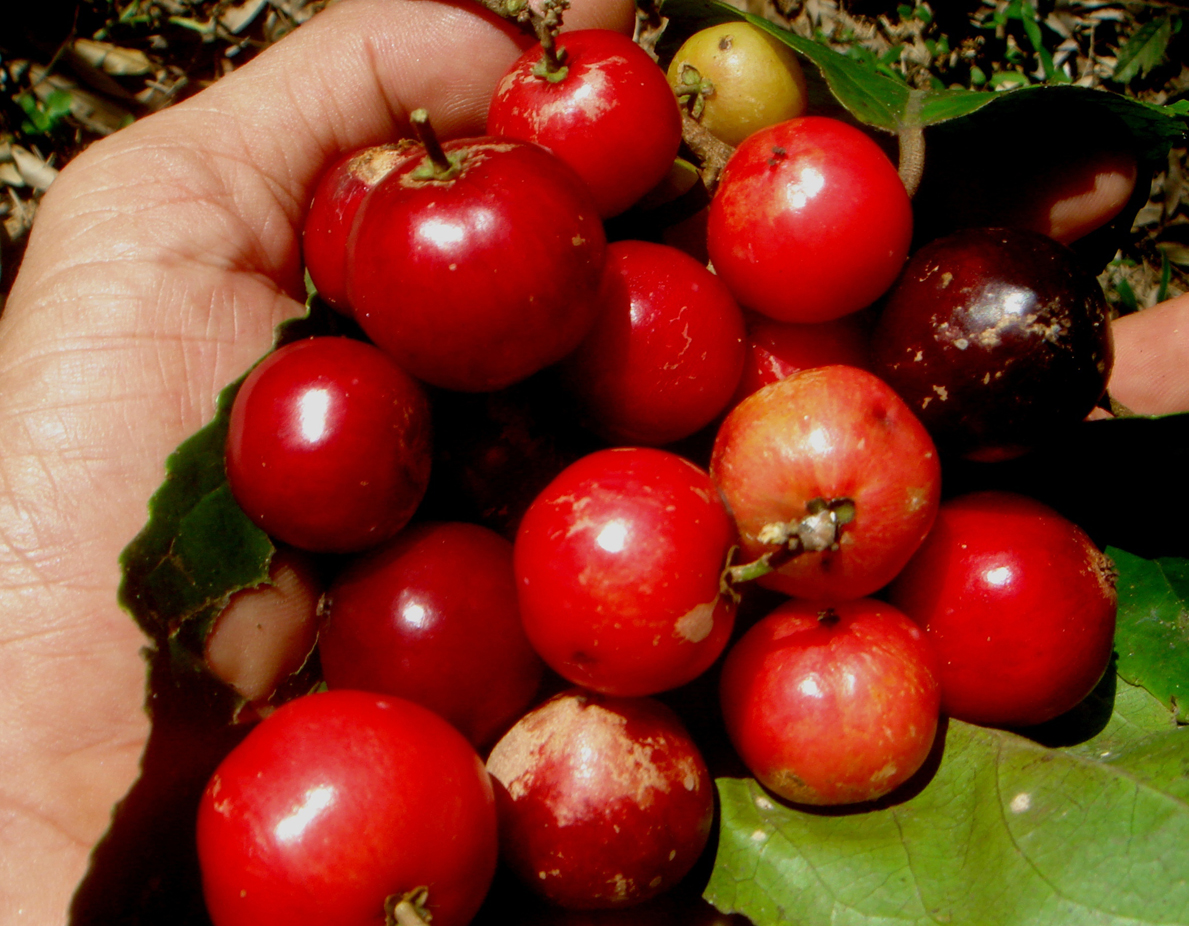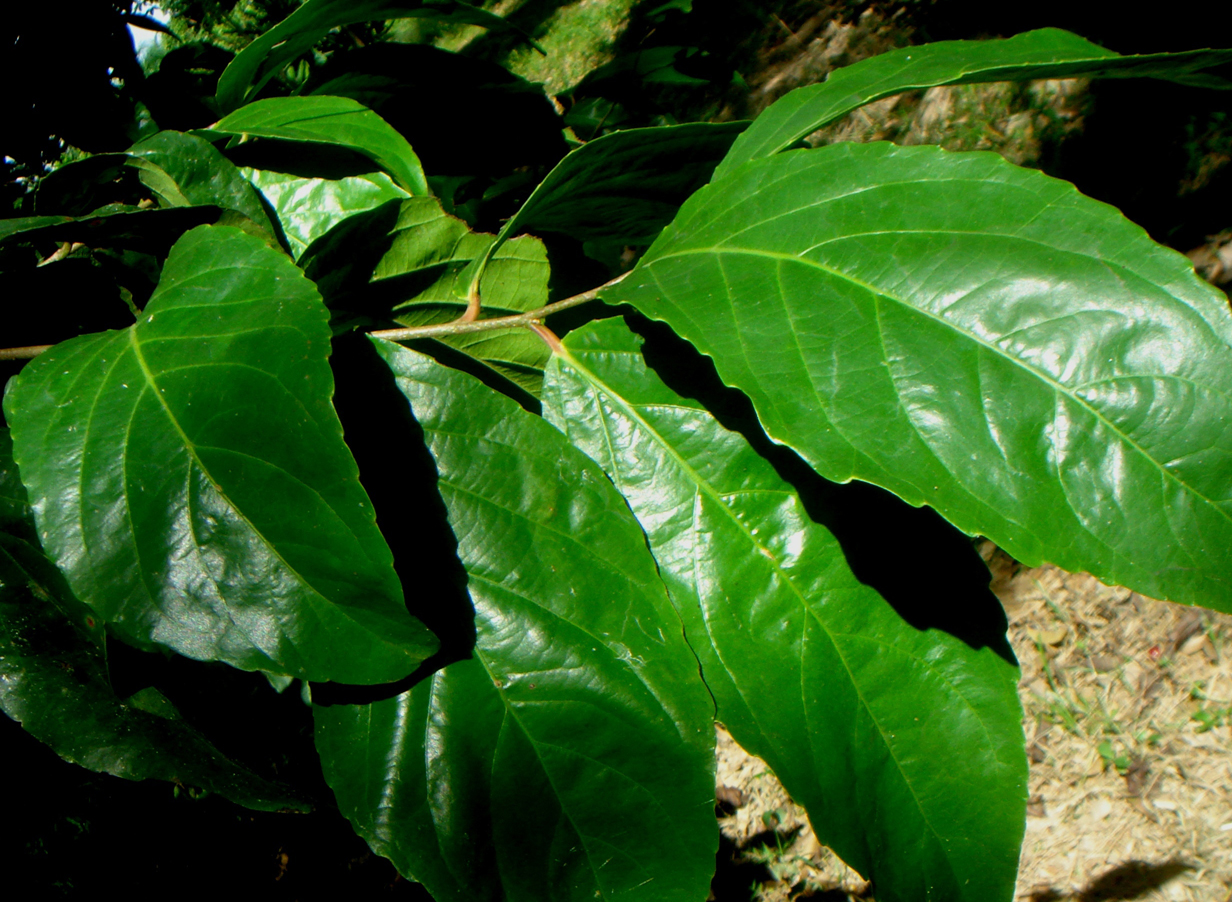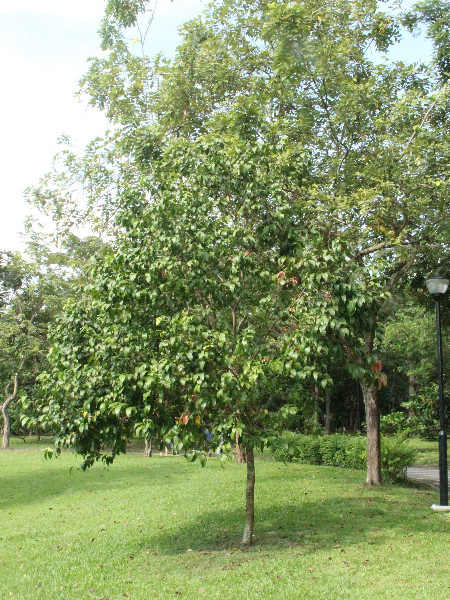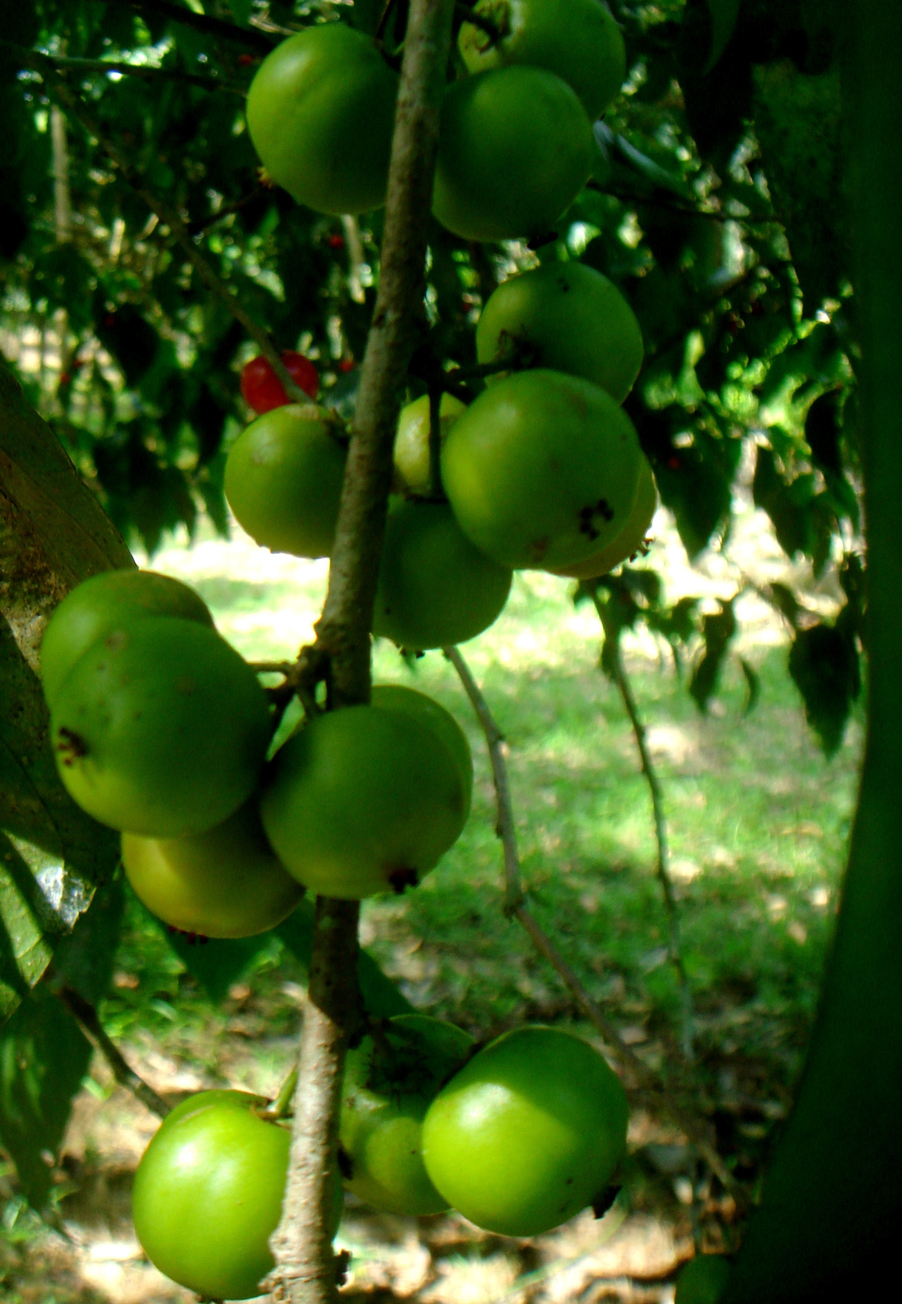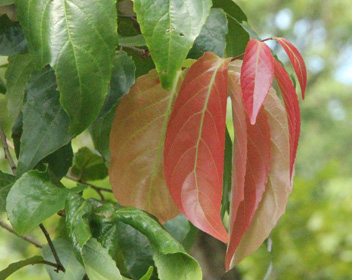Lobi-Lobi, scientifically known as Flacourtia inermis Roxb., is originated in tropical Asia including Malesia. The annual planted in the tropics of the New World. It is planted as a shade. The plant grows in form of trees which is 3 meters to 10 meters high. The trunk is usually crooked, furrowed and gnarled upto 35 cm with brown or grey, smooth bark. Branchlets are pubescent to nearly tomentose and brownish. Leaves are single, alternately and short-stemmed. Leaves are oval, 8 to 20 cm long and 3-15 cm wide. Racemes are short, nearly reduced to fascicles about 1 to 1.5 cm and puberulous having several small bracts at the base. Pedicles are slender, finely pubescent and measures 4-10 mm. Sepals are ovate, obtuse and nearly glabrous outside. Stamens are not fully developed. The fruit is round measuring 1-3 cm in diameter that encompasses many seeds. Fruit has soft skin with smooth surface. Young fruits are yellowish green which turns to dark red to purple black when ripened. The fruit tastes sour.
Traditional uses
- Fruit juice is used to treat diarrhea.
- It is also helpful in vomiting, nausea and throat aches.
Culinary uses
- Fruits are consumed raw or used for making jelly, jam, chutney, pickles, preserves, pies and confectionary.
- In Indonesia, cooked fruits are used in rujak (mixed fruit, chilli sauce and peanut) and asinan (mixed vegetable with chilli flavor).
- Fruits are processed in the form of jam, syrup and sweets.
References:
https://www.itis.gov/servlet/SingleRpt/SingleRpt?search_topic=TSN&search_value=502629#null
https://en.wikipedia.org/wiki/Flacourtia_inermis
https://www.revolvy.com/page/Flacourtia-inermis
https://id.wikipedia.org/wiki/Lobi-Lobi
Awesome
Comments
| Louvi plum Quick Facts | |
|---|---|
| Name: | Louvi plum |
| Scientific Name: | Flacourtia inermis Roxb |
| Origin | Philippines but which has naturalized in tropical Asia and Africa |
| Colors | Green to yellow to glossy, bright red |
| Shapes | Sub-globose to globose, 2–2.5 cm diameter, smooth |
| Taste | Sour and astringent |
| Name | Lobi-Lobi |
|---|---|
| Scientific Name | Flacourtia inermis Roxb |
| Native | Philippines but which has naturalized in tropical Asia and Africa |
| Common/English Name | Louvi plum, Batoko Plum, Louvi Plum, Batoko-Plum, Lovi-Lovi, Plum-of-Martinique, Plum of Martinique, Thornless Rukam, Tome-Tome |
| Name in Other Languages | Baree: Kamonju, Mengkoronda, Batak: Balakko, Lubi-Lubi, Boeol: Kenilango; Burmese: Naywe, Nayuwai; English: Batoko plum, Lovi-lovi, Plum-of-Martinique; French: Prunier de la Martinique, Prune de la Martinique; German: Lovi-Lovi; India: Cimaikkottaikkala, Cottaikkala (Tamil); Indonesian: Lobi-lobi; Java: Lobi-Lobi, Lampong: Lobi-Lobi, Makassar: Lobe Lobe, Malay, Lingga: Rukem Belanda, Malay, Singkep: Lubi-Lubi, Malay: Tomi-tomi, Lobi-lobi; Malaysia: Lobeh-Lobeh, Rukam, Tomi-Tomi, Rokam Masam, Rukam Masam; Maluku, Manado: Tome-Tome, Tomi-Tomi, Minangkabau: Lubi-Lubi, Philippines: Ratiles; South Ceram: Tomu-Tomu, South Halmaheira: Tombi-Tombi, Spanish: Ciruela De Martinica, Louvi Malayo; Sri Lanka: Looy-Looy, Lowi Lowi; Sumatra: Lubilubi, Sundanese: Saradan Kayu; Tagalog: Ratiles; Tamil: Cimaikkottaikkala (சீமைக்கொட்டைக்களா), Cottaikkala (சொத்தைக்களா); Thailand: Takhop-Thai Chinese: Luó bǐ méi (羅比梅), Persian: آلوی باتوکو; Sinhala: lovi (ලොවි); Tamil: Cīmaikkoṭṭaikkaḷā (சீமைக்கொட்டைக்களா); Malayalam: ലോലൊലി(ക്ക) |
| Plant Growth Habit | Evergreen shrub or small tree |
| Growing Climate | Hot, humid tropical |
| Soil | Well-drained, friable sandy |
| Plant Size | 10 m |
| Leaf | Ovate-oblong to ovate-elliptic, 9-25 cm long by 5-12.5 cm wide |
| Flower | Yellowish green, scentless, bisexual |
| Fruit shape & size | Sub-globose to globose, 2–2.5 cm diameter, smooth |
| Fruit color | Green to yellow to glossy, bright red |
| Fruit peel | Skin, smooth |
| Fruit Taste | Sour and astringent |
| Seed | Hard, irregular, 6 mm wide |


